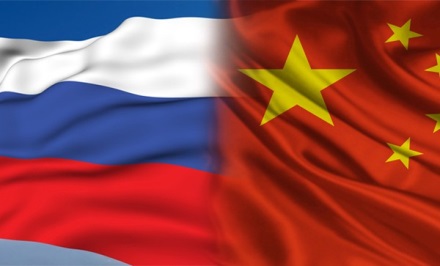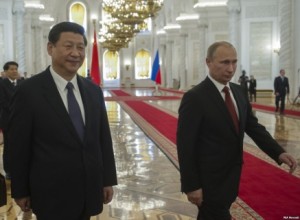
China and Russia Conclude Significant Energy Agreements
 Last week Chinese President Xi Jinping traveled to Russia for his first official foreign visit. While he was there, the two countries reached significant agreements in energy policy.
Last week Chinese President Xi Jinping traveled to Russia for his first official foreign visit. While he was there, the two countries reached significant agreements in energy policy.
Under the various agreements, Russia’s biggest oil producer, Rosneft, pledged to double its crude-oil deliveries to China in exchange for a $2 billion loan from the Chinese government. This loan is contingent upon 25 years of Russian oil deliveries to China.
Rosneft, as well as the Russian gas producing giant Gazprom, agreed to deepen energy ties with China National Petroleum Corporation (CNPC). Rosneft and CNPC will jointly explore offshore blocks in the Barents Sea and onshore blocks in Siberia. Meanwhile, Gazprom will partner with CNPC to build a Siberian pipeline which will deliver almost 38 billion cubic meters of Russian gas yearly to China by 2018.
The agreements could finally end years of tense negotiations between the two countries on an energy deal. Price differences are an oft-cited reason for this standoff—Russia wanted a higher price than what China was willing to pay. The Sino-Soviet split during the Cold War, and more recent Russian fears about the rise of China, were also factors. But the compromises made in this deal show that each country may finally be serious about recognizing the economic benefits of an energy partnership. Russia’s East Siberian Gas Fields will supply only China, and Russia will end its dream of supplying Europe from those fields. CNPC, meanwhile, will discuss an up-front payment for three decades worth of gas supplies, which could lower the projected cost of delivering the gas.
These agreements are important for a number of reasons. China is already the world’s largest energy consumer, and Russia is the largest energy producer. As China’s economy continues to grow, it will look for more outlets to power its growth. That makes China an ideal export destination for Russian energy, which is looking to increase its presence in Asia amidst Europe’s flat demand and economic crisis.
Rosneft and CNPC are also two of the biggest global energy conglomerates. Rosneft is the largest publically traded oil producer in the world, with its production up to 4 million barrels per day. CNPC plans to invest at least $60 billion in energy assets worldwide in this decade alone. The partnership between these two companies could reshape the global energy environment if they can overcome decades of mistrust.
One area that will come more into focus after these agreements is the Arctic. ASP notes that about 22% of the world’s undiscovered fossil fuels are located in the Arctic region. Russia and China will now jointly explore Arctic drilling in the Barents Sea, which might bring short-term economic benefits but long-term environmental consequences. The United States has a significant interest in Arctic energy as well, with over 29 billion barrels of oil estimated within the Alaskan North Slope. Continued cooperation between the Arctic nations will be important in the Arctic Council as they continue to learn more about the benefits and risks of drilling. It will be interesting to see if this development leads China to push harder for inclusion as an official ‘observer’ on the Council.
There are still some national security issues for Russia and China that will endure after these agreements. Russia’s economy continues to remain heavily dependent on energy exports, while China will need to look outward for energy supplies to sustain its economic growth. This seems to indicate a strategic match – and in some ways it is surprising that cooperation between these two countries on energy issues has been so low for so long. In spite of these issues, the recent energy agreements are a major breakthrough as both countries look to capitalize on their energy interests.






[…] Also see “China and Russia Conclude Significant Energy Agreements” […]